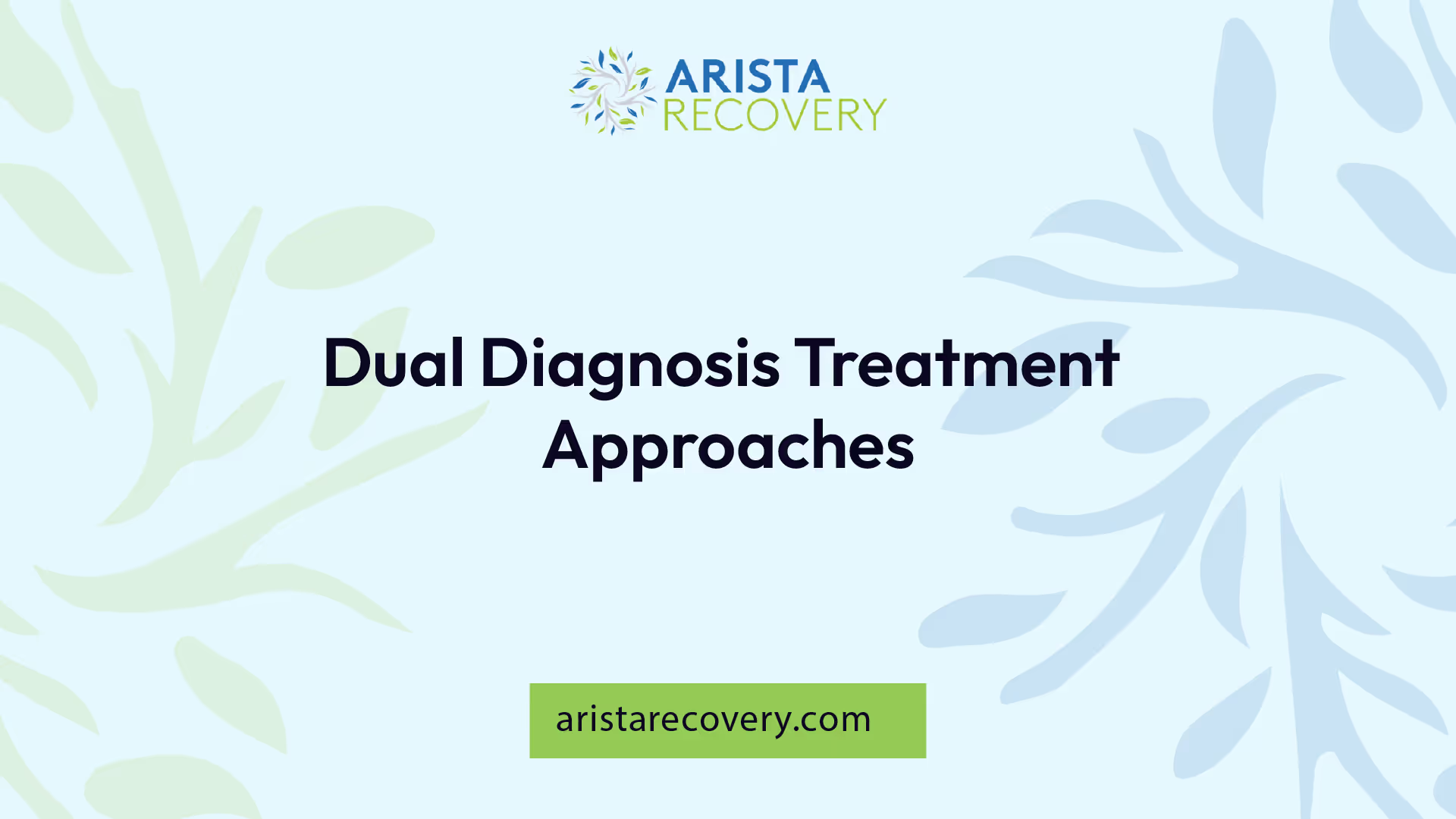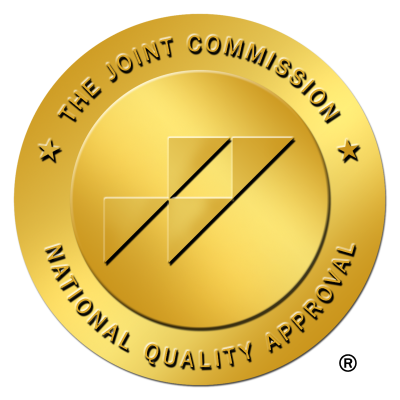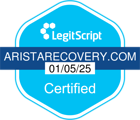What is Dual Diagnosis Treatment?


Understanding Dual Diagnosis
To fully comprehend the range of treatments for addiction, one must understand the concept of dual diagnosis.
Definition and Significance
The term 'dual diagnosis' refers to the coexistence of a mental disorder and a substance use disorder (SUD), involving alcohol or drugs in an individual. Also known as co-occurring disorders, this type of comorbidity signifies the simultaneous presence of two disorders in a person.
Understanding the term 'dual diagnosis' is not just about answering the question, 'what is dual diagnosis treatment?' It is also about recognizing the complex relationship between mental health and substance use, and the unique challenges this comorbidity presents in a treatment context.
Prevalence and Impact
The co-occurrence of mental and substance use disorders is more common than one might think. In 2020, it was estimated that 17 million U.S. adults had a co-occurring mental health disorder and substance use disorder.
Furthermore, researchers have found that 50% of people who experience a substance use disorder during their lives will also have a mental health disorder and vice versa.
According to the 2022 National Survey on Drug Use and Health by SAMHSA, approximately 21.5 million adults in the United States have a co-occurring disorder.
In the U.S., out of the 21 million people with a substance use disorder, 8 million also live with a mental illness. This prevalence indicates that dual diagnosis is a common occurrence rather than an exception.
Substance abuse is also twice as prevalent among adults with mental illness, as those with mental illness are more susceptible to addiction due to the desire to self-medicate symptoms.
These statistics underscore the importance of understanding dual diagnosis and implementing effective treatment strategies. With the right approach, individuals with dual diagnosis can embark on a successful path to recovery, improving their overall quality of life.

Barriers to Treatment
Understanding the challenges and barriers to dual diagnosis treatment is crucial for improving access to care and enhancing treatment outcomes.
Reasons for Lack of Care
Despite the prevalence of co-occurring mental health and substance use disorders, a significant number of affected individuals do not receive the necessary care. According to the National Institute on Drug Abuse, among adults with co-occurring disorders who did not receive mental health care, there were specific reasons for not receiving it. Similarly, among those who did not receive substance use care, there were reasons for this omission.
Financial constraints can often pose a significant barrier to treatment. For example, NCBI reports that among single mothers who receive welfare and wanted substance abuse and/or mental health treatment but did not access it, 26.4% cited cost of services or lack of insurance as a reason for not accessing treatment.
Challenges in Receiving Treatment
Accessing dual diagnosis treatment is further complicated by obstacles within the healthcare system. Providers have reported that organizational failure to sustain integrated service delivery, limited support for co-occurring disorder treatment training, and diagnostic and billing restrictions pose challenges to the delivery of effective co-occurring disorder services within the mental health system.
Furthermore, barriers to coordinating care with specialty substance abuse treatment providers include perceived shortcomings of the substance abuse treatment system, challenges communicating with substance abuse treatment providers, and difficulty reconciling different treatment approaches between mental health and substance abuse providers.
These barriers highlight the necessity for integrated and coordinated care models, such as those found in substance use treatment centers. Such models can foster improved communication between providers, more comprehensive treatment plans, and ultimately, better outcomes for individuals with co-occurring disorders. For those in need of intensive, structured treatment, exploring options like partial hospitalization treatment can also be beneficial.
In the face of these challenges, understanding 'what is dual diagnosis treatment?' and the various treatments for addiction available can empower individuals to seek the help they need and navigate the path to recovery.

Dual Diagnosis Treatment Approaches
When it comes to treating dual diagnosis, a comprehensive, integrated approach is the most effective. This involves addressing both the mental health condition and the substance use disorder simultaneously, rather than treating them separately.
Integrated Treatment Strategies
Integrated treatment for dual diagnosis is consistently superior compared to separate treatment of each disorder, as confirmed by National Institute on Drug Abuse. This approach involves a cohesive strategy to treat both substance use disorder and mental illness simultaneously.
The integrated treatment often involves cognitive behavioral therapy strategies, which aim to boost interpersonal and coping skills. It also incorporates approaches that support motivation and functional recovery. For a comprehensive look at the various treatments for drug abuse, visit our outline of treatments for drug abuse.
Behavioral Therapies and Medications
Behavioral therapies and medications form integral components of dual diagnosis treatment. According to the Cleveland Clinic, drugs like bupropion are used to treat both depression and nicotine dependence in individuals with dual diagnoses.
Cognitive-behavioral therapy (CBT) is the most common form of therapy used in dual diagnosis recovery facilities. This type of therapy focuses on changing harmful patterns of thinking, thereby leading to more positive behavioral patterns.
Dialectical behavior therapy (DBT) expands on CBT by including specific skill sets and techniques to replace negative coping mechanisms with positive ones [6].
Both types of therapy play a crucial role in the recovery process, providing individuals with the tools they need to manage their mental health condition and overcome their substance use disorder.
Medications are also an important part of dual diagnosis treatment. Effective medications exist for treating opioid, alcohol, and nicotine use disorders and for alleviating the symptoms of many other disorders.
These integrated treatment strategies form the basis of dual diagnosis treatment. However, the specific treatment plan will depend on the individual's unique needs and circumstances. For more information on the various aspects of a substance use treatment plan, visit our page on substance use treatment plan facets.
Recovery Process
The recovery process for dual diagnosis treatment is multifaceted, involving both medical and therapeutic approaches. This process often starts with detoxification and is continuously supported by behavioral changes and the development of coping skills.
Detoxification and Support
Dual diagnosis recovery often commences with detoxification, which may be done in an inpatient setting. Here, healthcare providers monitor and support patients through the withdrawal process, ensuring safety and managing potential withdrawal symptoms. Detoxification is the initial step towards sobriety and serves as a foundation for further treatment.
It's important to note that detoxification is just the beginning of the recovery journey. It's typically followed by a comprehensive treatment plan that involves several therapeutic interventions. For more information about the different treatment options, visit our outline of treatments for drug abuse.
Behavioral Change and Coping Skills
Following detoxification, the focus of dual diagnosis treatment shifts to behavioral therapies and the development of positive coping skills.
Cognitive-behavioral therapy (CBT) is commonly used in dual diagnosis recovery facilities. This therapeutic approach aims to change harmful patterns of thinking, leading to more positive behavioral patterns.
Another therapy used is Dialectical behavior therapy (DBT), which expands on CBT by incorporating specific skill sets and techniques to replace negative coping mechanisms with positive ones.
Exposure therapy is another therapeutic approach that helps patients learn to confront their fears, lessening the power of these fears over time.
Alongside these therapies, psychosocial interventions play a crucial role in managing dual diagnosis patients. These interventions, including group therapy, individual counseling, and support groups, have been shown to benefit in maintaining abstinence, adherence to medication, and overall improvement in functioning [8].
The journey towards recovery from dual diagnosis is a complex and ongoing process. By combining medical treatments with behavioral therapies and coping strategies, individuals can effectively manage their conditions and work towards a healthier, more balanced future. For more information on the specific aspects of dual diagnosis treatment, read our article on substance use treatment plan facets.
Key Components of Treatment
When it comes to dual diagnosis treatment, several key components contribute to the recovery process. These include cognitive-behavioral therapy, dialectical behavior therapy, and exposure therapy.
Cognitive-Behavioral Therapy
Cognitive-behavioral therapy (CBT) is the most common form of therapy used in dual diagnosis recovery facilities. This type of therapy focuses on altering harmful patterns of thinking under the belief that this will lead to more positive behavioral patterns.
The goal of CBT is to help individuals understand how their thoughts and behaviors are interconnected. By changing negative thought patterns, individuals can learn to manage their addictive behaviors more effectively. CBT is often included as a part of an outline of treatments for drug abuse.
Dialectical Behavior Therapy
Dialectical behavior therapy (DBT), modeled after CBT, expands on this method of therapy by including specific skill sets and techniques to replace negative coping mechanisms with positive ones.
DBT emphasizes the development of skills like mindfulness, emotion regulation, distress tolerance, and interpersonal effectiveness. These skills can help individuals manage their symptoms, reduce the likelihood of relapse, and improve their quality of life.
Exposure Therapy
Exposure therapy is a type of treatment that helps patients learn to confront their fears. When someone avoids their fears over a long period, it worsens and solidifies that fear.
In the context of dual diagnosis treatment, exposure therapy may be used to help individuals confront situations or triggers that contribute to their substance use or mental health symptoms. By gradually facing these fears in a controlled environment, individuals can learn to manage their reactions and reduce their symptoms.
According to Conifer Park, integrated treatment for dual diagnosis, which often incorporates CBT strategies, has been found consistently superior compared to separate treatment of each disorder. This cohesive strategy involves treating both the substance use disorder and mental illness simultaneously, thereby enhancing the effectiveness of the treatment.
By understanding the key components of dual diagnosis treatment, individuals can make an informed decision about the substance use treatment plan facets that will best meet their needs. It's important to note, however, that each individual's treatment plan will be unique and tailored to their specific needs and circumstances.
Importance of Early Detection
In the journey towards recovery from addiction, early detection plays a significant role, especially in cases of dual diagnosis. This involves identifying and treating both mental health and substance use disorders concurrently.
Enhancing Treatment Outcomes
Early detection is pivotal in enhancing the outcomes of dual diagnosis treatment. It optimizes the chances of recovery by allowing for the implementation of integrated treatment strategies and psychosocial interventions at the early stages of the disorders. This approach not only reduces the severity of the symptoms but also improves the overall quality of life for the affected individuals.
It is alarming to note that an estimated 8.9 million adults in the United States have co-occurring mental health and substance use disorders (COD). Only 7.4% of these individuals receive treatment for both disorders, and a shocking 55% receive no treatment at all.
Implementing Integrated Strategies
Integrated treatment for comorbid drug use disorder and mental illness has been found to be consistently superior compared with separate treatment of each diagnosis. Integrated treatment often involves using cognitive behavioral therapy strategies to boost interpersonal and coping skills and using approaches that support motivation and functional recovery.
The integrated dual disorder treatment model (IDDT) for addiction services has identified a bio-psychosocial approach, motivation enhancement, time-unlimited services, substance use counseling, multidisciplinary teams, and outreach programming as key components of evidence-based treatment across different types of interventions for persons with dual disorders.
Individuals with untreated COD have increased odds for medical illness, suicide, and early mortality. They frequently present with anxiety, depression, personality disorders, have a history of homelessness or incarceration, and are often women [9].
To learn more about the treatment options available for substance use disorders, you can explore our outline of treatments for drug abuse. For a deeper understanding of one of the treatment options, you can read about what is partial hospitalization treatment. And for a broader perspective on the different approaches, you can look at our article comparing substance use treatment centers vs addiction treatment centers.
References
[1]: https://medlineplus.gov/dualdiagnosis.html
[2]: https://my.clevelandclinic.org/health/diseases/24426-dual-diagnosis
[4]: https://www.nami.org/Blogs/NAMI-Blog/October-2017/Understanding-Dual-Diagnosis


